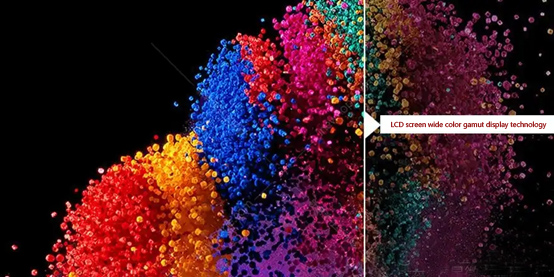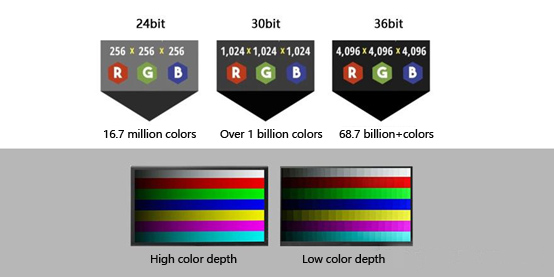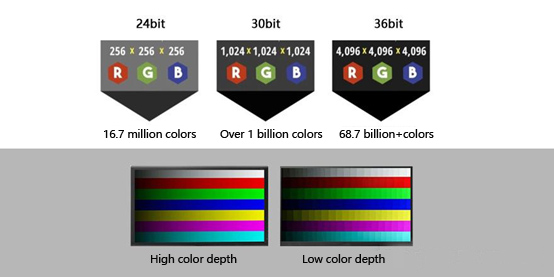What are the factors that affect the color presentation of LCD screens?

The color presentation of LCD screens is influenced by various factors, including color depth, color gamut, backlight technology, color filters, viewing angle, brightness, contrast, response time, color temperature, ambient light, panel type, and color ca
Regarding the parameters of LCD screens, customers are mainly concerned about information such as size, panel type, brightness, viewing angle, interface definition, and so on. When customers inquire, these parameters are often asked the most times because they are the most direct demand parameters for customers, and therefore receive a higher degree of attention. Of course, some parameters that customers are not very concerned about are also crucial, as they directly affect the color rendering effect of the screen image, such as LCD screen color accuracy, color gamut, color depth, and so on. Below, we will provide a detailed introduction to the factors that affect the color presentation of LCD screens:

1. Color depth
Color depth refers to the number of colors that each pixel can express when the resolution is determined. The higher the color depth, the smoother the color transition, and the richer the color expression. Common color depth parameters include:
16.7M: equivalent to 16.7 million colors, representing the presentation of 16.7 million colors per pixel. The calculation method is: each color point (R, G, B) is represented by 8-bit binary, and each color point has 256 color levels, so the total number of colors is 256 × 256 × 256=16.7 million.

2. Color gamut
Color gamut refers to the range of colors that a display screen can display. The wider the color gamut, the richer the colors that the screen can display. Common color gamut standards include:
SRGB: The most commonly used color gamut, widely used in devices such as computer monitors, digital cameras, and smartphones.
Adobe RGB: a commonly used color gamut in professional fields, suitable for printing, photography, and film industries.
DCI-P3: A color gamut commonly used in the film industry, capable of presenting richer colors.
3. Backlight technology
Backlight technology has a significant impact on color presentation. Common backlight technologies include:
•LED backlight: With higher brightness and contrast, it can provide more vivid colors.
• CCFL backlight: Traditional backlight technology has relatively low brightness and contrast.
4. Color filter
The color filter determines the color range that the LCD screen can display. Different models of color filters can affect
the size of the color gamut.
5. Perspective
Perspective refers to the range of images that remain clear and visible when viewed from different angles on a screen. A larger viewing angle range means that even when viewed from the side, the image can maintain good color and contrast.
6. Brightness and Contrast
• Brightness: The highest brightness level of the screen, usually expressed in cd/m ². Higher brightness can make the image brighter.
• Contrast: The difference between screen brightness and dark areas. A higher contrast can make the image clearer and more delicate.
7. Response time
Response time refers to the time required for a liquid crystal crystal to switch from one pixel state to another, measured in milliseconds (ms). A lower response time can reduce the occurrence of blurring and ghosting.
8. Color temperature and ambient light
• Color temperature: The color quality of a light source, usually expressed in Kelvin (K). A higher color temperature will give the image a cool tone, while a lower color temperature will give the image a warm tone.
• Environmental light: The intensity and color temperature of environmental light can also affect the color performance of the screen. In brighter environments, higher screen brightness is required to maintain good visual effects.
9. Panel type
Different panel types (such as TN, IPS, VA) have different effects on color performance. For example, IPS panels typically have a wider viewing angle and more accurate color representation.
10. Color calibration
By using software tools such as Spyder and ColorMunki for color calibration, the color performance of the LCD screen can be adjusted to make it more accurate and realistic.
summary
The color presentation of LCD screens is influenced by various factors, including color depth, color gamut, backlight technology, color filters, viewing angle, brightness, contrast, response time, color temperature, ambient light, panel type, and color calibration. Understanding these factors and making reasonable choices and adjustments can significantly improve the color performance of LCD screens.
AUO LCD DISPLAY:https://www.idtdisplay.com/products/auo-lcd-modules/










